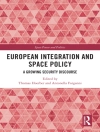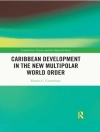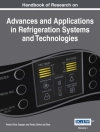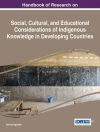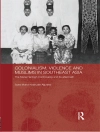Animal experimentation has long been a controversial issue with impassioned arguments on both sides of the debate. Increasingly it has become more expedient and feasible to develop new methods that avoid the use of animals. There is agreement on both sides that reduction and refinement of experiments on animals should be an important goal for the industries involved. Alternatives to Animal Testing, written by leading experts in the field, discusses the issues involved and approaches that can be taken. Topics include; the safety evaluation of chemicals, international validation and barriers to the validation of alternative tests, in vitro testing for endocrine disruptors, intelligent approaches to safety evaluation of chemicals, alternative tests and the regulatory framework. The book provides an up-to-date discussion of the current state of development of alternatives to animal testing and is ideal for professionals and academics in the field. It would also be of use for graduate students wishing to pursue a career in the pharmaceutical and cosmetic industries.
Table des matières
Part One: General Overview of the Safety Evaluation of Chemicals;
1: Introduction;
2: Legislation and regulatory requirements;
3: The regulatory paradigm;
4: The interface between toxicology and risk assessment;
5: Interpreting toxicology;
6: Conclusions;
7: References;
Part Two: International Validation and Barriers to the Validation of Alternative Tests;
1: Introduction;
2: Background to the Validation Process;
3: The Validation Process;
4: Problems Being Encountered in Implementing the Validation Process;
5: The Need for an Invalidation Process;
6: Concluding Remarks;
7: References;
Part Three: In Vitro Testing for Endocrine Disruptors;
1: Introduction;
2: In Silico Approaches;
3: In Vitro Tests for EDs;
4: Discussion;
5: Conclusions;
6: Acknowledgement;
7: References;
Part Four: Intelligent Approaches to Safety Evaluation;
1: Introduction;
2: Hazardous properties assessment;
3: Risk Assessment;
4: Existing Studies and Literature Data;
5: Surrogate Data: Calculation, Read Across and SAR/QSAR;
6: Alternatives to Animal Toxicology Studies;
7: Data Waivers;
8: Expert reports and weight of evidence;
9: Preliminary risk assessments;
10: EU Registration, Evaluation and Registration scheme (REACH);
11: Data for REACH;
12: Regulatory planning & liaison with the regulators;
13: Common themes;
14: Acknowledgements;
15: References;
Part Five: Alternative Tests and the 7th Amendment to the Cosmetics Directive;
1: Introduction;
2: Overview of current approaches to risk assessment for cosmetics;
3: 7th amendment to the EU Cosmetics Directive (76/768/EEC);
4: Status of alternative tests;
5: Endpoints where risk assessment for cosmetics can be achieved without using animal data;
6: Endpoints where risk assessment for cosmetics cannot currently be achieved without using animal data;
7: New approaches to risk assessment without animals;
8: Acknowledgements;
9: References;
A propos de l’auteur
Roy Harrison OBE is Queen Elizabeth II Birmingham Centenary Professor of Environmental Health at the University of Birmingham. In 2004 he was appointed OBE for services to environmental science. Professor Harrison’s research interests lie in the field of environment and human health. His main specialism is in air pollution, from emissions through atmospheric chemical and physical transformations to exposure and effects on human health. Much of this work is designed to inform the development of policy.


